|
| |
Family Syrphidae
- This page contains pictures and information about Yellow-shouldered Hover
Flies that we found in the Brisbane area, Queensland, Australia.
-
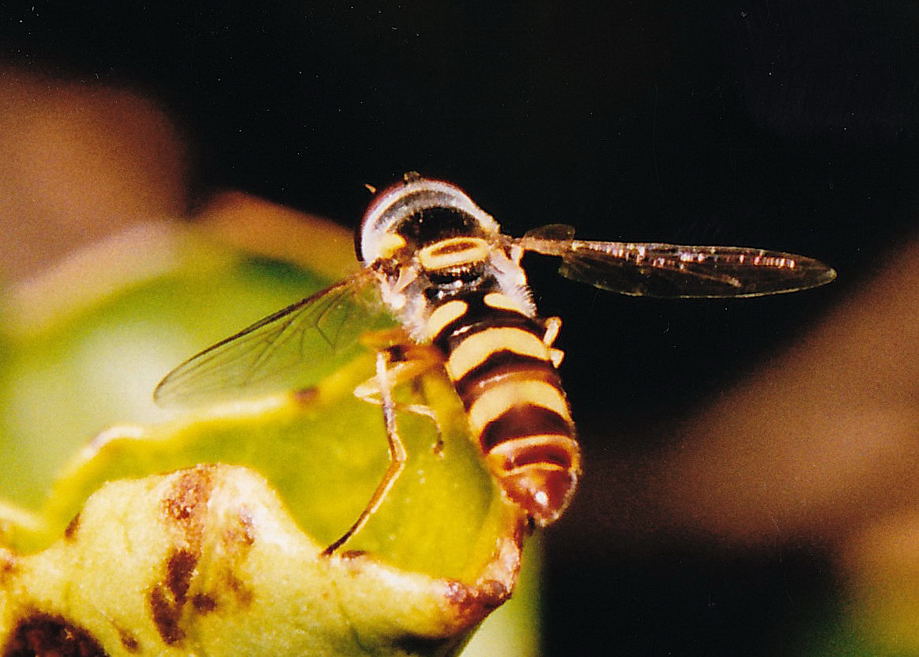 - Male, body length 10mm
-
-
This Hover Fly has the yellow edge on each side of thorax.
We sometimes find this Common Hover fly hovering among the hibiscus plants in our
backyard searching for aphids. Their larvae are the predator of aphids.
-
-
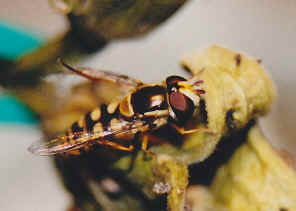

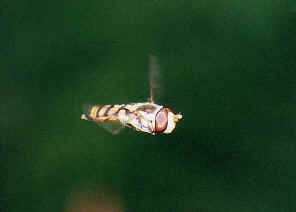
-
Female
-
-
Some species in tribe Syrphini
look very similar.
We call all of them Common Hover Flies. They are hard to be distinguished
in the field and some of them may not be common. This species is common in
Brisbane.
-
-
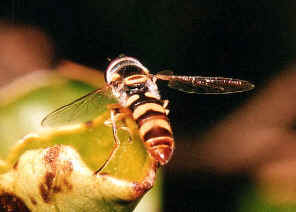
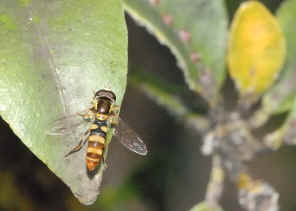
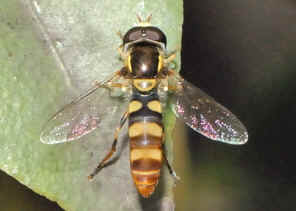
-
Male
-
Common Hover Flies may sometimes confused with bees or wasps because of their
mimic colour. Their bodies are medium to slender. On their abdomen there
are the yellow-black wasps pattern and the narrow waist mimic pattern.
-
-
Common
Hover Flies visit flowers as bees and wasps. They are usually seen
hovering or resting on flowers. The flies feed on nectar and are the
pollinators of plants as well.
-
-
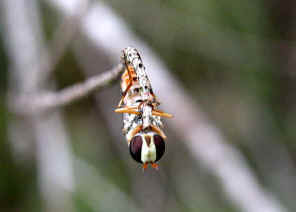 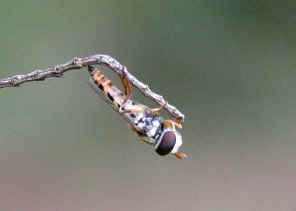
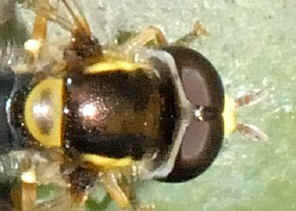 -
- Common
Hover Fly rests on stick during the evening.
-
- After mating, female Common Hover
Fly look for the good site to lay her eggs. Usually somewhere near the aphids
feeding place.
-
 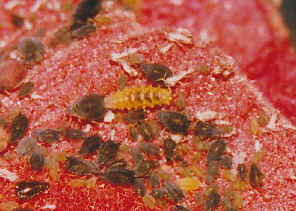
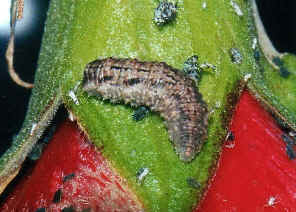
- Larvae feeding on aphids, body length 10mm.
Length 12mm
-
- Aphid-eating hover fly larvae are legless and maggot-like. They are
creamy-white to brown in colour, the above picture shows the larvae is
searching its prey in a aphids colony.
-
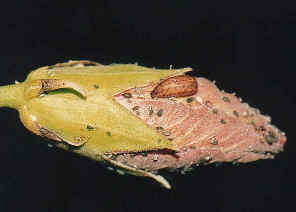 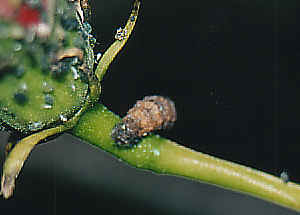 
-
Pupa, length 8mm
Adult female, just came out from
pupa
-
- They pupate on flower bud or stem of plants. The pupa is dark brown in colour.
-
-
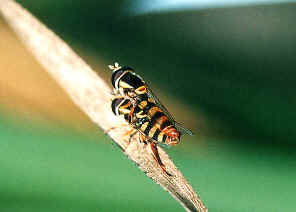 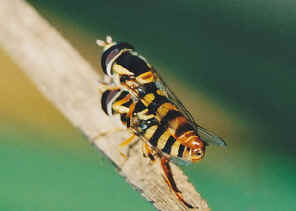 - Mating
couples
-
- They turn into adults in about a week. The
adults are yellow and black in colour look like bees or a wasps. They have the
typical fly head with large pair of red compound eyes and short antenna.
Adults look for mate and start the new life cycle.
-
- We
found that the Hover Flies could be parasited by Ichneumon Wasp. More
information found in the Ichneumon Wasp
page.
-
- Reference:
- 1. Wildlife
of Tropical North Queensland - Queensland Museum Publications 2000,
p106.
- 2. Ischiodon
scutellaris (Fabricius)
- www.aphidweb.com, 2008.
- 3. Simosyrphus scutellaris (was
Ischiodon) - Graeme's Insects of Townsville, Australia.
- 4. Northern
Territory Insects, A Comprehensive Guide CD - Graham Brown, 2009.
[ Up ] [ Small Slender Hover Fly ] [ Small Yellow Hover Fly ] [ Waisted Slender Hoverfly ] [ White-banded Slender Hover Fly ] [ Grey-banded Hoverfly ] [ Yellow-shouldered Slender Hover Fly ] [ Black-headed Hover Fly ] [ Yellow-shouldered Stout Hover Fly ] [ Orange-banded Slender Hover Fly ]
| |
|


















